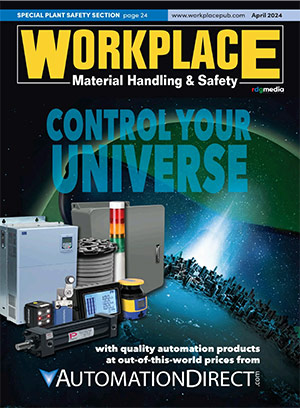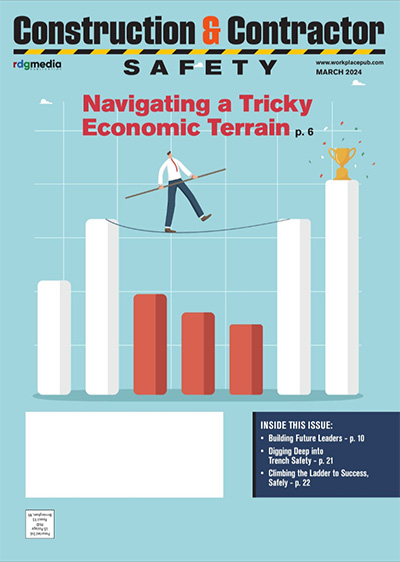Safeguard Against Machine Hazards, Injuries with Employee Training

Even the most elaborate safeguarding system cannot offer effective protection, unless the worker knows how to use it and why. (photo courtesy of J. J. Keller & Associates)
The first day on the job for a new employee ended tragically, when the 21-year-old man suffered severe burns and the loss of four fingers on his right hand as he tried to clear a jam in a plastic molding machine. The man had only been working for a few hours when the incident occurred. During their investigation, OSHA inspectors found that the company had failed to train the employee about safety requirements that protect workers from machine hazards.
As a result, OSHA cited his employer for two willful, two repeated and one other-than-serious violation. The company faced proposed penalties of $171,270 and was placed in OSHA’s Severe Violator Enforcement Program following the investigation of the injury. The agency had cited the company previously for similar hazards at the same facility.
Even the most elaborate safeguarding system cannot offer effective protection, unless the worker knows how to use it and why.
Training
Training is essential for employee protection, but OSHA’s general-industry standards on machine guarding don’t have any general requirements for machine operator training. OSHA does require training for power press operators under 1910.217(f)(2)) and forging machine operators at 1910.218(a)(2)(iii)). Similarly, for portable power tools, OSHA’s standard on guarding of portable powered tools at 1910.243 includes no employee training requirements; there are no training requirements for specific types of power tools.
However, under the General Duty Clause, an employer has a responsibility to provide “a place of employment which is free from recognized hazards that are causing or are likely to cause death or serious physical harm to his employees.” OSHA can issue a citation for a violation of the General Duty Clause, if the lack of training is a recognized hazard that’s causing or is likely to cause death or serious injury or harm to employees.
For example, an OSHA General Duty Clause citation that mentions training employees in the operation of a pipe threading machine states, in part, “Elements essential to an acceptable safe operating procedure include at a minimum: … 2) Provide training and education to the machine operators concerning all the appropriate procedures for the safe operation and use of this type of machinery. …”
Thorough operator training should involve instruction or hands-on training in the following:
- A description and identification of the hazards associated with particular machines;
- The safeguards themselves, how they provide protection, and the hazards for which they are intended;
- How to use the safeguards and why;
- How and under what circumstances safeguards can be removed, and by whom (in most cases, repair or maintenance personnel only); and
- What to do (e.g., contact the supervisor) if a safeguard is damaged, missing or unable to provide adequate protection.
The machine manufacturer’s instruction manual is an excellent source of information on the equipment’s proper inspection, use and maintenance procedures. The information provided in operating manuals is specific to the equipment and provides the details necessary for safe operation. Other sources of information on the safe use of equipment would be any available industry consensus standards (e.g., ANSI, ASME or other organizations’ standards) that have been developed for that type of machine. For example, ANSI 01.1 is the standard on “Safety Requirements for Woodworking Machinery.”
This kind of safety training is necessary for new operators and maintenance or setup personnel when any new or altered safeguards are put in service, or when workers are assigned to a new machine or operation.
Hazard Recognition

Thorough operator training should involve instruction or hands-on training. (photo courtesy of J. J. Keller & Associates)
Virtually all equipment with moving parts can be considered potentially dangerous; despite your efforts to protect operators and other employees from those hazards, workers should understand that not all hazards may have been anticipated, identified and guarded. Sometimes even a subtle change in how a machine is used can expose operators and other employees in the area to new hazards. An effective hazard recognition process provides the best protection against previously unanticipated risks.
Each worker is a key player in the hazard recognition process, and all employees should:
- Know how to recognize, inspect and properly adjust machine safeguards.
- Always think about potential hazards before they operate equipment. Workers should be aware of all moving parts and potentially dangerous work areas, and they should know to not reach into equipment if they aren’t certain that it’s safe.
- Be aware of their coworkers’ actions. If they see someone doing something they think may be dangerous, they should speak up.
- Anticipate the unexpected. Workers shouldn’t assume that safeguards and warning signs always completely eliminate all potential hazards.
- Know how to report hazards.
Effective hazard recognition requires cooperation between managers and workers. Management must ensure that workers are trained to recognize potential hazards in their work areas, and workers must know that management will respect a worker’s decision to evaluate and report a potentially dangerous situation.
Remember, even the most elaborate safeguarding system cannot offer effective protection unless the worker knows how to use it and why. Specific and detailed training is therefore a crucial part of any effort to provide safeguarding against machine-related hazards and serious injuries. WMHS
Ray Chishti is an Editor at J. J. Keller & Associates, a nationally recognized compliance resource company that offers products and services to address the range of responsibilities held by business professionals. Chishti specializes in workplace safety topics, such as employee training, fall protection, personal protective equipment and fire protection. He is the Writer and Editor of J. J. Keller’s Safety Training Talks and OSHA Compliance for Transportation manuals and is a speaker at webcasts and other educational events. For more information, visit www.jjkeller.com/osha and www.jjkellerlibrary.com .



